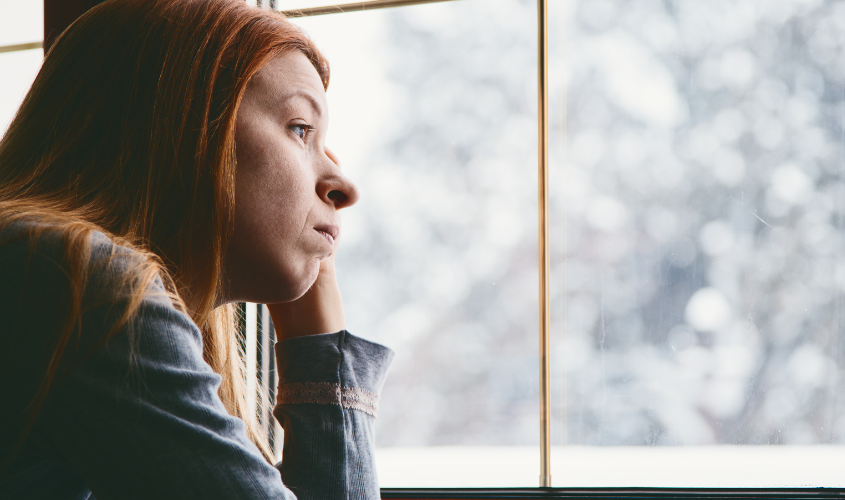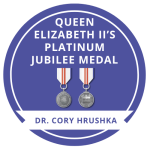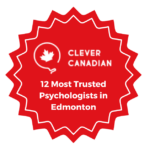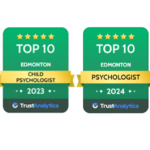
While the ‘winter blues’ and seasonal affective disorder (SAD) are often mentioned together, SAD more deeply affects the individuals who experience it. SAD is a type of depression that occurs with the shift of the seasons and impacts approximately 15% of Canadians, at least mildly, in their lifetime according to the Canadian Psychological Association 1. SAD is most commonly experienced in the winter months, however, it can also be experienced in any of the other three seasons 2. Regardless of when you experience symptoms of SAD, psychologists at Insight Psychological encourage you to utilize the following 5 tips to cope with seasonal affective disorder.
1. Get some sunshine and fresh air
Experts theorize that SAD is caused in part by a shift in individuals’ circadian rhythm (sleep-wake cycle) as daylight viewing hours become shorter leading to a disruption in serotonin and melatonin levels 3. Individuals can combat the symptoms of SAD and regulate their circadian rhythms by making an effort to view natural light soon after waking and early in the daytime (Erickson).
However, if you are unable to view natural sunlight for any reason, ask your doctor about using a lightbox 3. Lightboxes mimic natural light and release brain chemicals that improve mood 3. Exposure to light from a lightbox should be for a duration between 20 to 90 minutes to experience mood-boosting effects 4.
2. Spend time with loved ones
While it can be tempting to curl up on the couch and watch your favourite series solo all day long, feelings of isolation can worsen SAD symptoms. If you do suffer from SAD, ensure that you make an effort to spend time with those loved ones who bring you joy. Further, having conversations with a trusted person in your life can help elevate your mood.
3. Avoid overconsumption of carbohydrate-heavy foods and alcohol
When struggling with SAD, individuals may turn to food or alcohol as coping tools. Self-medicating with substances could quickly evolve into an addiction that comes with additional physical, mental, and relational challenges 2. Overconsumption of carbohydrate-heavy foods and alcohol can also worsen SAD symptoms 5.
4. Stay active
Studies suggest that exercise can help improve symptoms of SAD 6. While it may be challenging to find the motivation to exercise when experiencing SAD symptoms, participating in an activity like a group fitness class with a friend can help foster social connection while also taking care of your physical and mental health. You can even boost the positive effects of exercise by walking or running outside to get a dose of vitamin D while releasing feel-good endorphins.
5. Speak to a therapist
SAD can be treated with psychotherapy and often with the support of medical prescriptions. Untreated, this common condition can be very debilitating. If you have experienced any of the symptoms of SAD, it is advisable to set up an appointment with a psychologist as soon as possible. It is difficult to handle these problems on your own; professional help may be necessary for you to get better and deal with your condition, but when you get that support, you may find that life is more manageable, you’ll have tools to cope with challenges, and you may find that overall, you’re back to your old self – or maybe even better than before you experienced seasonal affective disorder.
Insight has many therapists that can support you on this journey. You can book online or call us to set up an appointment for counselling – in-person, online (video), or telephone.
References:
- Canadian Psychological Association. (n.d.). “Psychology Works” fact sheet: seasonal affective disorder (depression with seasonal pattern). Retrieved November 21, 2022, from https://cpa.ca/psychology-works-fact-sheet-seasonal-affective-disorder-depression-with-seasonal-pattern/
- Stein, S. (2022, September 15). Seasonal affective disorder. American Addictions Centers. https://americanaddictioncenters.org/treating-depression-substance-abuse/sad
- Mayo Clinic. (2021, December 14). SAD. https://www.mayoclinic.org/diseases-conditions/seasonal-affective-disorder/symptoms-causes/syc-20364651
- Rosenthal, N. E. (2012). Winter blues: everything you need to know about seasonal affective disorder. Guilford Publications.
- Johns Hopkins Medicine. (n.d.) Seasonal affective disorder. Retrieved November 21, 2022, from https://www.hopkinsmedicine.org/health/conditions-and-diseases/seasonal-affective-disorder
- Peiser. (2009). Seasonal affective disorder and exercise treatment: a review. Biological Rhythm Research, 40(1), 85–97. https://doi.org/10.1080/09291010802067171
















